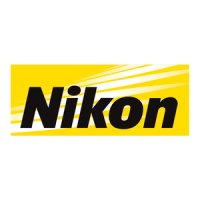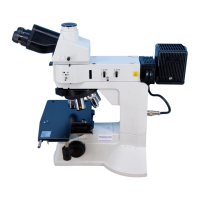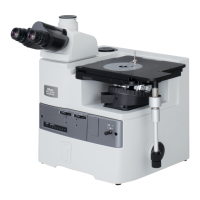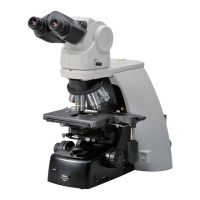CARE AND MAINTENANCE
CONTENTS
9
9
4
6
8
8
9
IV. OPTICAL SYSTEM .
NOMENCLATURE .
II. ASSEMB LY .
MICROSCOPY .
1. Operating Procedure .
2. Manipulation of Each Element
1) Interpupillary distance
adjustment .
2) Diopter adjustment .
3) Optical path change-over in the
trinocular eyepiece tube 9
4) Centering the condenser lens 10
5) Useof condenser aperture
diaphragm 10
6) Use of field diaphragm 11
7) Focusing 11
12
III.
I.
oCleaning the lenses
T6 clean the lens surfaces, remove dust
using a soft brush or gauze. Only for
removing finger marks or grease, should
soft cotton cloth, lens tissue or gauze
Iightly moistened with absolute alcohol
(ethyle alcohol or methyl alcohol) be used.
For cleaning the objectives and immersion
oil use only xylene.
For cleaning the surface of the entrance
lens of the eyepiece tube and the prism
surface of the Trinocular Eyepiece Tube
"T" or the Ultra Wide Eyepiece Tube
"UW", use absolute alcohol.
Observe sufficient caution in handling
alcohol and xylene.
f)Cleaning the painted surfaces
Avoid the use of any organic solvent (for
example, thinner, ether, alcohol, xylene
etc.) for cleaning the painted surfaces and
plastic parts of the instrument.
8Never attempt to dismantle!
Never attempt to dismantle the instrument
so as to avoid the possibility of impairing
the operational efficiency and accuracy.
V. PHOTOMICROGRAPHY 16
VI. USE OF THE ACCESSORIES 19
VII. TROUBLE SHOOTING TABLE 21
1. Optical 21
2. Manipulation 22
3. Electrical 23
4. Photomicrography 23
ELECTRIC SPECIFICATIONS
27
oWhen not in use
When not in use, cover the instrument with
the accessory vinyl cover, and store it in a
place free from moisture and fungus.
It is especially recommended that the
objectives and eyepieces be kept in an air-
tight container containing desiccant.
oPeriodical checking
To maintain the performance of the instru-
ment, we recommend to check the instru-
ment periodically. (For detai Is of this
check, contact our agency.)
3
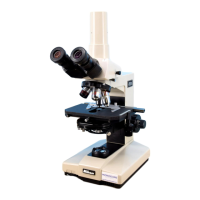
